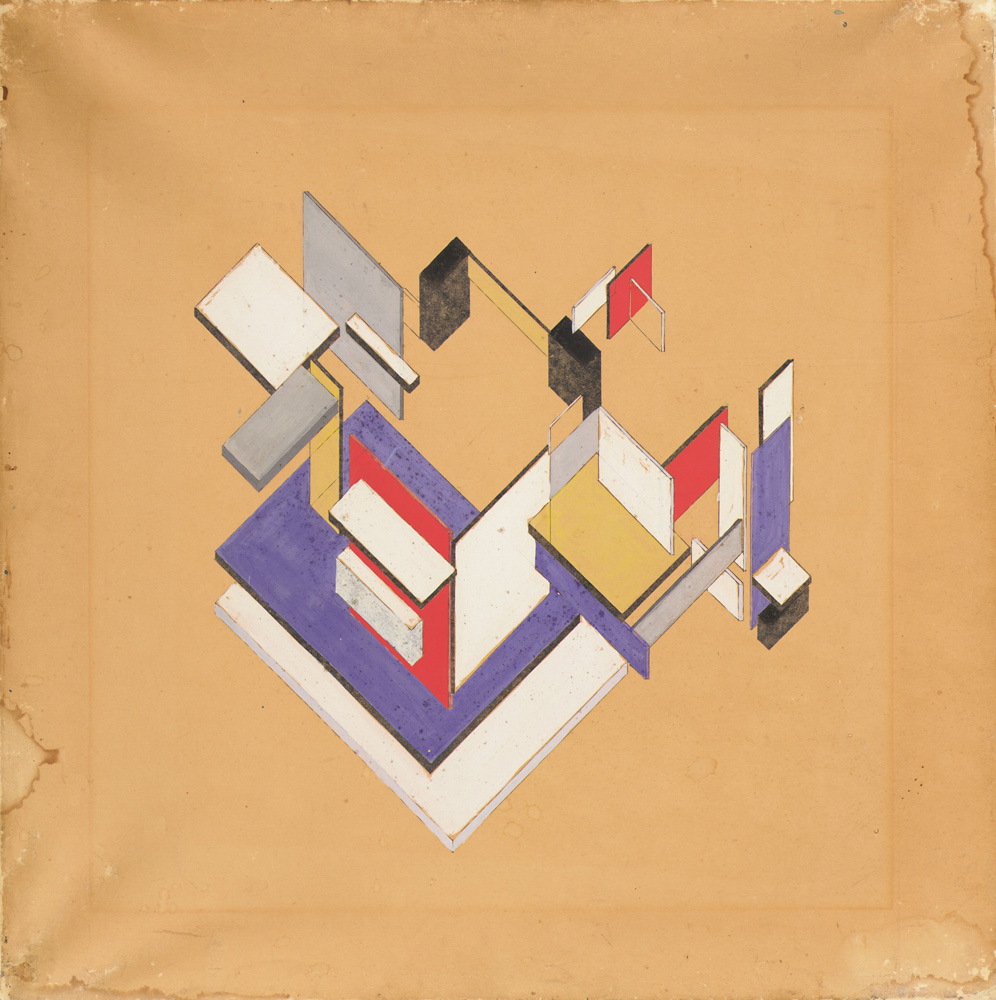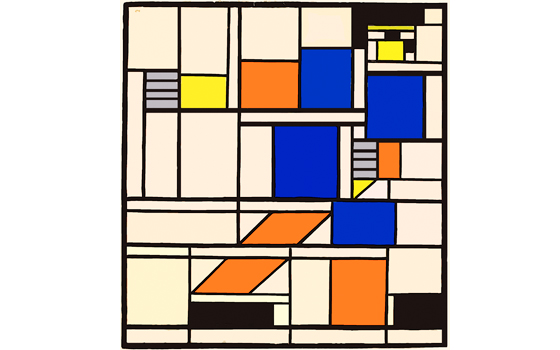De Stijl is a Dutch art movement of conscious abstraction, named after the magazine De Stijl, founded in Leiden in 1917, with founder Theo van Doesburg, Piet Mondriaan, Vilmos Huszár, Bart van der Leck, poet Antony Kok, architects J.J.P. Oud and Jan Wils and the Italian futurist Gino Severini., Robert van 't Hoff, Gerrit Rietveld and the Belgian Georges Vantongerloo as 'members'. De Stijl was a loose, fluid group of artists, architects and a writer. The group promoted unity between life and art; between the individual and the universal and saw this as a solution for the colorless time of the First World War. Order and color as a solution. And of course symmetry, which could make production easier.
Artists such as Mondriaan and Van Doesburg were already concerned with abstraction. They were encouraged to do this by cubism and futurism, but especially the Russian artist Kandinsky. When the First World War broke out in 1914, the Netherlands remained neutral. Because the country was cut off from the rest of Europe for four years, Dutch artists were able to develop more independently during that period, but were not able to travel freely to, for example, Paris. The socio-economic conditions of that time were an important source of inspiration and motivation. The modernization of society was seen as something inevitable and modern art as a solution for more efficient and therefore more economical construction. For that reason, relatively many communist artists, including Van 't Hoff and Rietveld, joined De Stijl.

The reform consisted of using only primary colors, black and white, and a simple design to show harmony. It was about complete abstraction. However, the topic was not banned. In fact, through precision and geometry you can show the harmony, also of nature, in a reasoned manner, or so the idea was. The Dutch landscape was also created by man and is in the tradition of De Stijl, which is how Mondriaan and Van Doesburg saw the world.
The magazine had a major influence on art in the Netherlands and abroad from 1917 until Van Doesburg's death in 1931. Internationally, De Stijl is better known as neoplasticism or new plasticism and played a central role in the European avant-garde from the 1930s onwards. More than 300 copies of the magazine were probably never printed. The number of subscribers was approximately 120, with a notable number of subscribers in Japan. However, the influence was much broader than just the subscribers, witnessing the position of Mondrian and the other members in the art world.
Exactly one year after the publication of the first issue of De Stijl, the first manifesto was published, which was published on J.J.P. Oud and Gerrit Rietveld after it was signed by all members. This suggests a homogeneity that was not there. The group has organized only two joint exhibitions: the architectural exhibitions at Galerie l'Effort Moderne and the École Spéciale d'Architecture, both in Paris. The artists obviously knew each other, but most of the communication took place via letter contact. For example, Mondriaan and Rietveld never met.
In March 1920 he was introduced to the French art dealer Léonce Rosenberg in Mondrian's Paris studio, which would later result in an architectural exhibition at the Galerie l'Effort Modern. Van Doesburg then traveled to Berlin in December 1920 where he was introduced to the management of the Bauhaus by Bruno Taut. Van Doesburg subsequently settled in Weimar for a longer period of time, where he organized a Style course. This course resulted in an increase in the number of members, including Karl Peter Röhl, Werner Graeff and Max Burchartz.

When van Doesbrug also started working with diagonal lines in 1926 and focused further on elementarism, this resulted in a break with Mondriaan, who continued to adhere to the new visual principles with only horizontal and vertical lines. The white represents reality, or one's mind. The lines form the 'events'. Mondriaan saw the masculine (or the spiritual) in the vertical line, the feminine (or the material, the earthly, nature) in the horizontal line. These two forces had to be in balance in every person and in every painting. The compositions thus exude an atmosphere of peace and balance.
/s3/static.nrc.nl/images/stripped/1007kunmondriaan.jpg)
Van Doesburg died in 1931. After this, a large number of former members of De Stijl worked together one more time by compiling an issue of De Stijl in 1932 in memory of Van Doesburg. The influence of De Stijl on architecture was great until well after 1931. Examples of architecture include the Rietveld-Schröder House (1924), café De Unie designed by J.J.P. Oud and the management hut in the Witte Dorp. Rietveld continued to make furniture according to the principles of De Stijl. The influence on art has also been lasting with the neoplastic compositions by Mondriaan, Van der Leck and later Ger Gerrits, a work of which we offer on our website.

